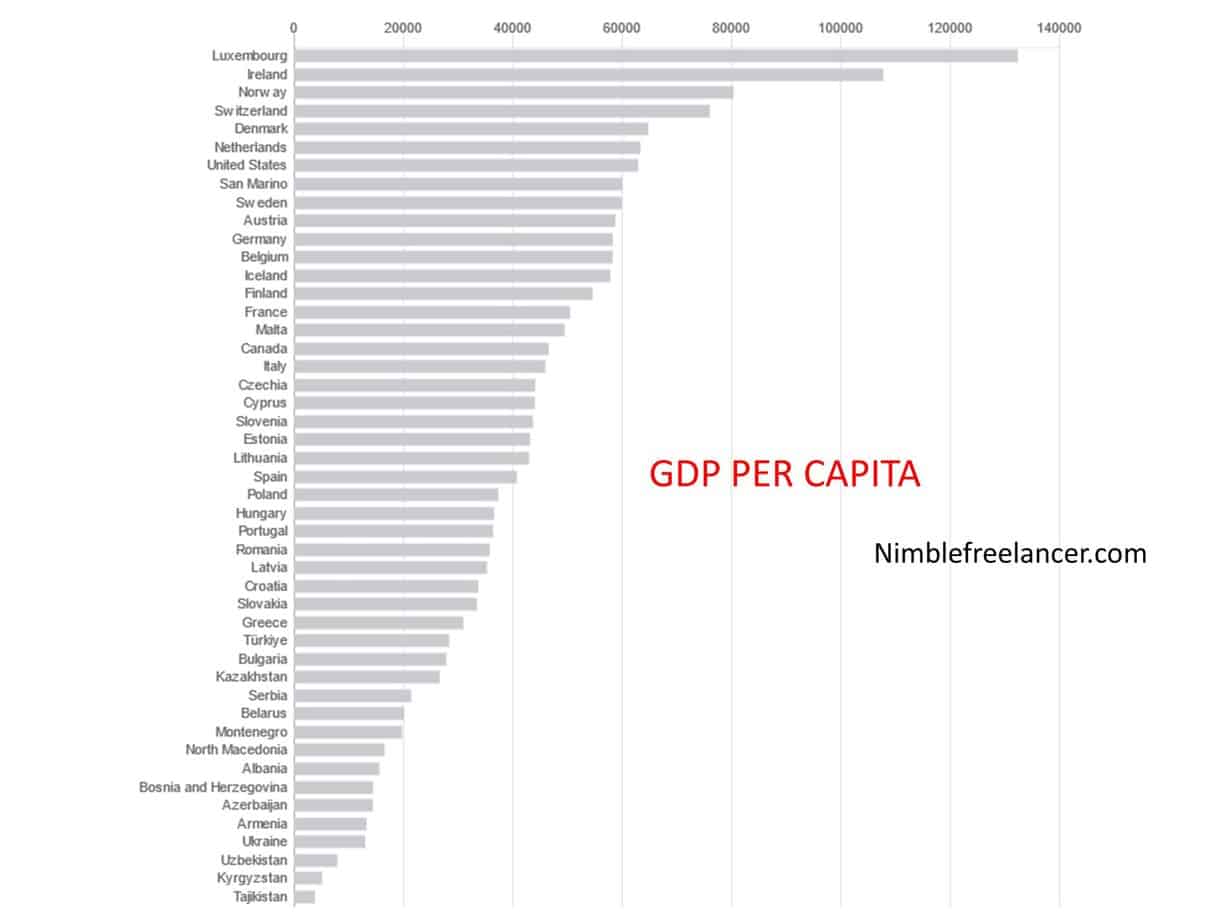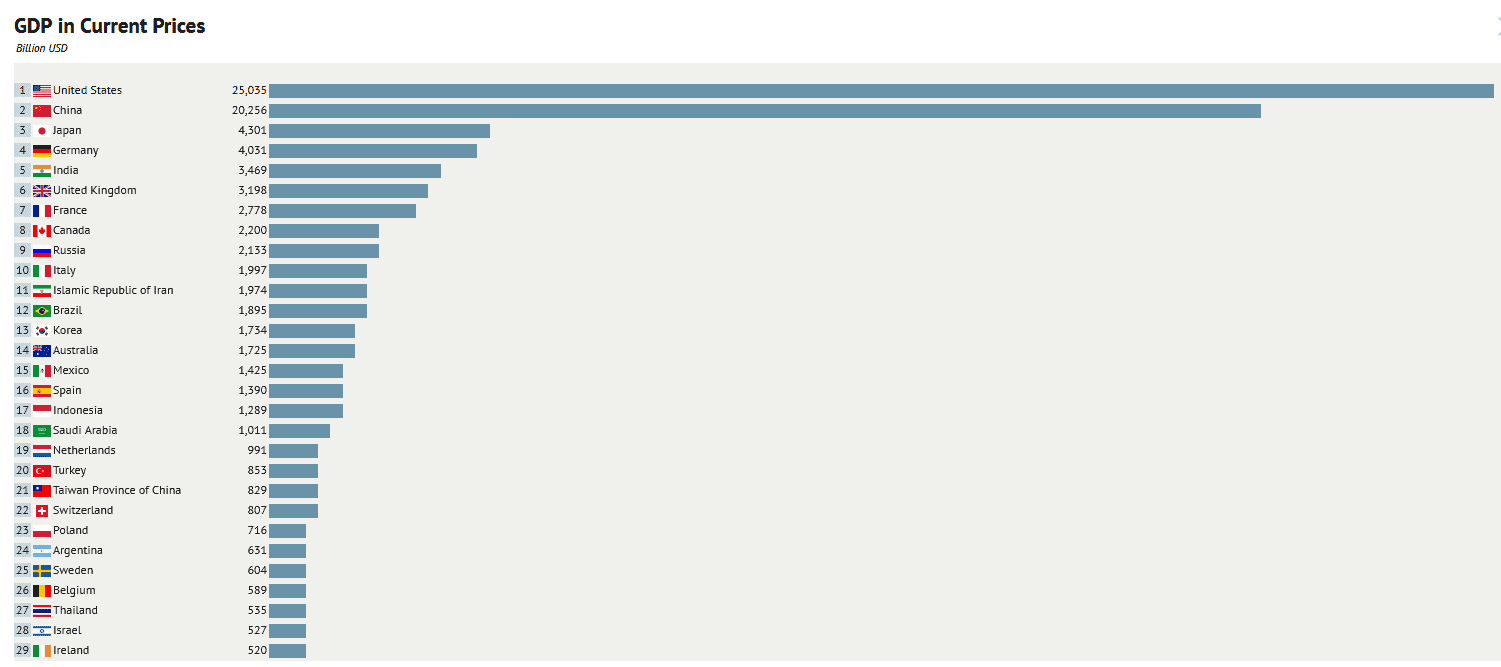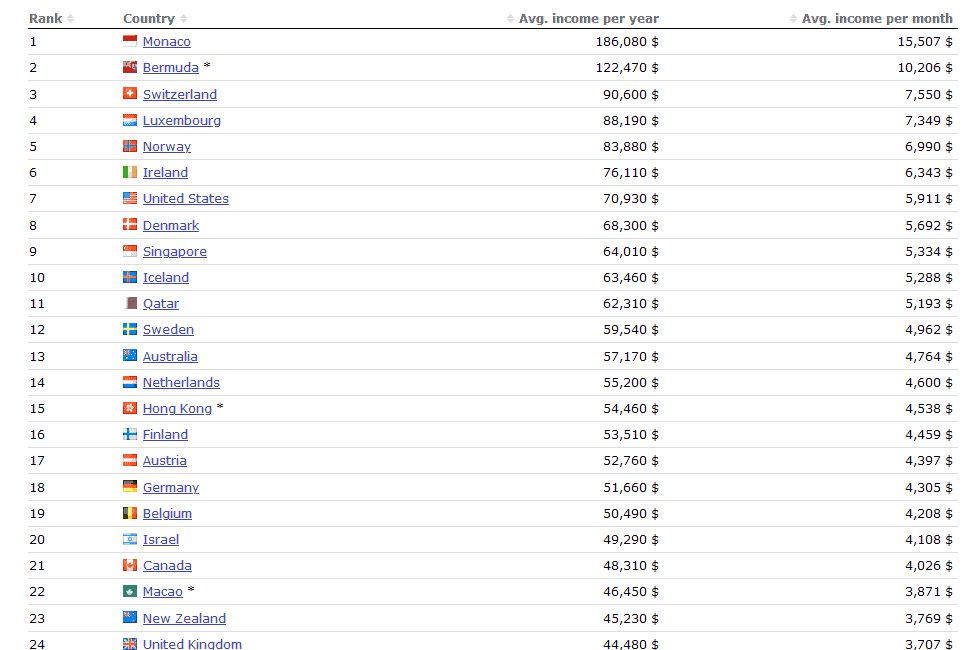As a trader, during fundamental analysis, it is essential to track the GDP performance of countries. For example, if the US GDP increase, there is a high probability that the US dollar price will increase.
However, sometimes, in reports, you need to understand terms.
GDP stands for Gross Domestic Product. It is a measurement of a country’s overall economic activity. It helps to gauge the financial health of the country. Per Capita, on the other hand, means per person. Therefore, GDP per capita measures a country’s economic output that accounts for the total number of people. It is achieved by dividing the country’s real GDP by its total population in a particular year.
What is GDP per Capita?
GDP per capita represents the quotient of a country’s GDP by its population. To calculate GDP per capita, you need to sum the gross value added by all resident producers in the economy plus any product taxes. Then you need to divide by midyear population.
GDP PER CAPITA = GDP / POPULATION

GDP per capita, also known as per capita income or per capita gross domestic product (GDP), is a metric used to measure a country’s economic performance by dividing its total GDP by population size. It is an essential indicator of the economic well-being of a nation and its citizens, as it reflects the average amount of money earned by each individual in a given year. GDP per capita can help to compare different countries in terms of their productivity and standard of living. It can also be used to assess the impact of public policies on economic growth and development.
So if we compare GDP per capita and GDP, we will see that the highest GDP has the US while the biggest GDP per capita has Luxemburg because of a smaller population.

Gross Domestic Product (GDP) measures the total value of goods and services produced within an economy over a specific period – usually one year. The GDP figure serves as an overall indicator for monitoring changes in national wealth. The higher the GDP, the greater the resources available for production activities, such as housing, transportation, education, health care, etc.
On the other hand, per capita income is calculated by dividing this sum by the number of people living in that particular country at any given time. This figure represents how much money each person earns annually and provides insight into overall economic inequality among individuals in a specific region or nation. Per capita income can be determined at the national and regional levels; however, it should not be confused with ‘median income,’ which considers all wages earned across society without regard for population size.
Generally speaking, when comparing countries with similar levels of population density and development, those with higher levels of GDP tend to have higher average incomes than those with lower GDP – though this isn’t always true across all regions. For example, some European countries may have high GDP per capita and median household incomes due to their large middle-class populations –. In contrast, other countries may have low levels for both metrics due to large numbers of people living under poverty lines in slums or rural areas where there are few opportunities for employment or advancement in social status.
Though GDP per capita doesn’t necessarily reflect whether or not citizens are well taken care of financially since it does not include transfer payments from social safety nets like unemployment benefits or welfare programs, it does indicate how much money individuals earn on average relative to each other within a country’s borders – which can help decision makers understand where resources need to be allocated most effectively when attempting to boost socio-economic development efforts among disadvantaged groups or regions within their nations.
Is GDP Per Capita The Same as the Average Income (Income per capita)?
GDP per capita is not the same as average income because Gross domestic product measures how much every individual has contributed to production. In contrast, income per capita measures the average income of every individual in the country.

So the highest GDP per capita values are Luxemburg, Ireland, and Norway, while the highest values of average income (income per capita) are Monaco, Bermuda, and Switzerland. This proves that GDP per capita and Income per capita is not the same (see images above).
GDP and income per capita are often confused as the same measure of a country’s economic health. It is essential to understand their differences to assess a nation’s financial standing accurately. Gross Domestic Product (GDP) per capita measures how much each individual has contributed to producing goods and services within a given year. The income per capita, however, measures the total amount of money each person earns in a given year, regardless of where it comes from or how it was achieved.
At first glance, GDP and income per capita can seem similar. However, several vital differences must be considered when assessing a country’s economic well-being. To begin with, GDP considers all economic activity occurring within a country, while income only considers wages or salaries earned by individuals. This means that GDP includes spending on food, housing, and business investments. On the other hand, income does not have these expenses when calculating average earnings for citizens. Furthermore, GDP does not consider differences in individual wealth or income sources, such as capital gains or transfers from family members overseas. In contrast, income does consider these factors when determining an individual’s average earnings over a given period.
The most significant difference between GDP and income per capita lies in how they measure a nation’s economic standing. While GDP is typically used to compare one country’s economy against another’s by looking at overall production capabilities, income is the better metric for understanding living standards and poverty levels within countries because it provides a more direct look at what citizens earn annually. By understanding these two metrics separately, it is possible to get an accurate view of both short-term financial health and long-term potential for growth within any given country or region.
In conclusion, it is essential to understand the distinction between GDP per capita and income per capita when measuring a nation’s economic strength because they provide vastly different information about living standards across countries worldwide. While GDP shows what citizens produce on an aggregate level over one year, income gives insight into what individuals earn – which makes it far more helpful in accounting for disparities in wealth distribution among nations worldwide. Therefore, it is critical to look at both metrics to gain an unbiased perspective on global economic conditions today and in the future.
GDP per capita helps compare the country’s success depending on its population size. A country with a higher GDP per capita can be economically healthy. While a country may have a high Gross Domestic Product, it may not necessarily result in a higher Gross Domestic Product per capita. Countries with a very high population risk have an inferior Gross domestic product. For example, china ad a very high GDP in 2017, but its GDP per capita reduced significantly because of its high population.
The higher the GDP of a country, the higher the country’s economic wealth of that country’s citizens. The income per capita assesses the country’s affordability, including health and housing. It has been criticized for measuring the quality of life in a country because it fails to account for inflation and includes everyone in the population, even children and foreigners. It also does not account for non-monetary activities in which its members may be involved. The difference between Gross National Income (GNI) and Gross Domestic Income is that, while GDP only considers income made from within the country, GNI is more comprehensive.
The formula for achieving gross domestic per capita and gross national income per capita is similar, but differences exist.
The difference will only be noticeable if a country has a large population working outside the country because it would mean the total population for its GDP and GNI duffer with a significant number.
In conclusion, per capita and Gross domestic income are very similar because they measure their standard of living. However, they use different measures and measure other factors apart from the country’s economic health. Gross domestic product calculates how much every individual has contributed to production, while per capita income measures every individual’s average income. All of these factors show the health of the country’s economy. Therefore, they should not be different, but the fact that one considers the population in the country at that particular time while the other considers incomes from outside the government brings about a slight difference between the two.
























